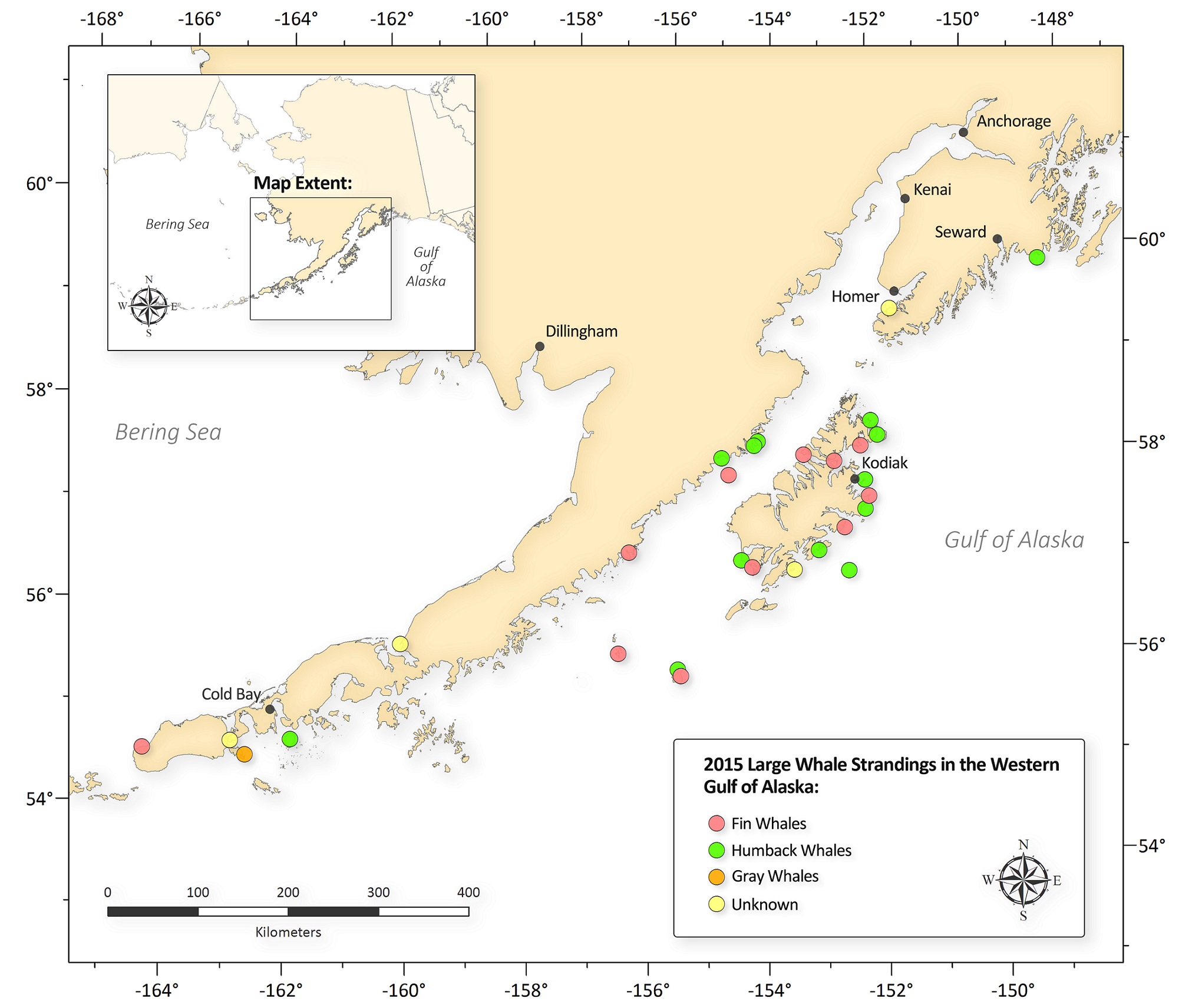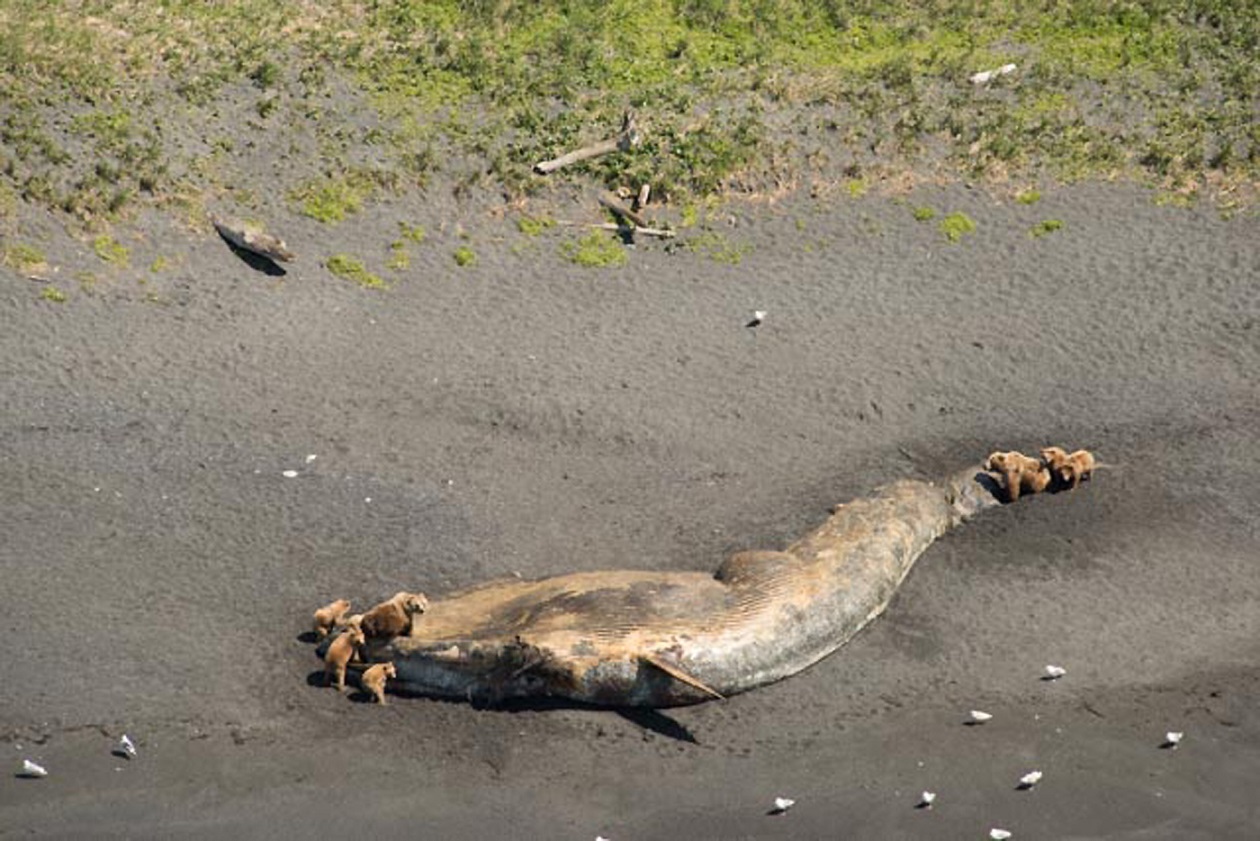Since May 2015, 11 fin whales, 14 humpback whales, one gray whale, and four unidentified cetaceans have been found dead around the islands of the western Gulf of Alaska and the southern shoreline of the Alaska Peninsula, according to NOAA. Canadian authorities are also seeing an uptick in whale deaths off the coast of British Columbia.

"Most of the carcasses have been not retrievable. They've been floating and/or they've been stranded for a temporary period of time in inaccessible areas and a lot of those have been moderately to severely decomposed."
They have run some tests for biotoxins, but so far the tests have been inconclusive. Rowles says the sample they collected tested negative for domoic acid — a toxin produced by algae that thrives in warm seawater conditions.
"We still have the saxitoxin results pending, but it hasn't been a sample that's been successful for us in the past, so even though the one sample we tested was negative, it was not the most appropriate sample to collect and test for biotoxins."
Rowles says they can't say for certain that the whale was not exposed to abiotoxins. In order to rule-in or rule-out possible causes of the whale deaths, she says they need more samples, but big whales are difficult to access in order to conduct necropsies.
"Trying to investigate large whale mortality events provides a lot of logistical complications and getting access to good samples, getting access safely to carcasses, and even finding a place for carcasses to be towed and examined."
Many of the whales have washed up in the Kodiak Archipelago. Marine mammal specialist Bree Whiteveen says there are a few reasons why that could be. One is the high number of fin, humpback, and grey whales that already pass through those waters during summer.
"As far as the number of eyes that we have around Kodiak is quite a big greater than you would have around the Alaska Peninsula and further west and so we may simply just be able to see more of the carcasses and not document additional carcasses, and further if it was a very localized event, then you would expect the carcasses to be more localized when they are finally sighted."
Rowles says the next step is to put together the investigative team and pull the data together. She says it'll be a slow process and it could be a while before they find an answer, if they manage to reach one.




I wonder if the corpses have been checked for radioactive contamination from fukushima and/or the possibilty of gas poisoning from the giant undersea volcano off Oregon.